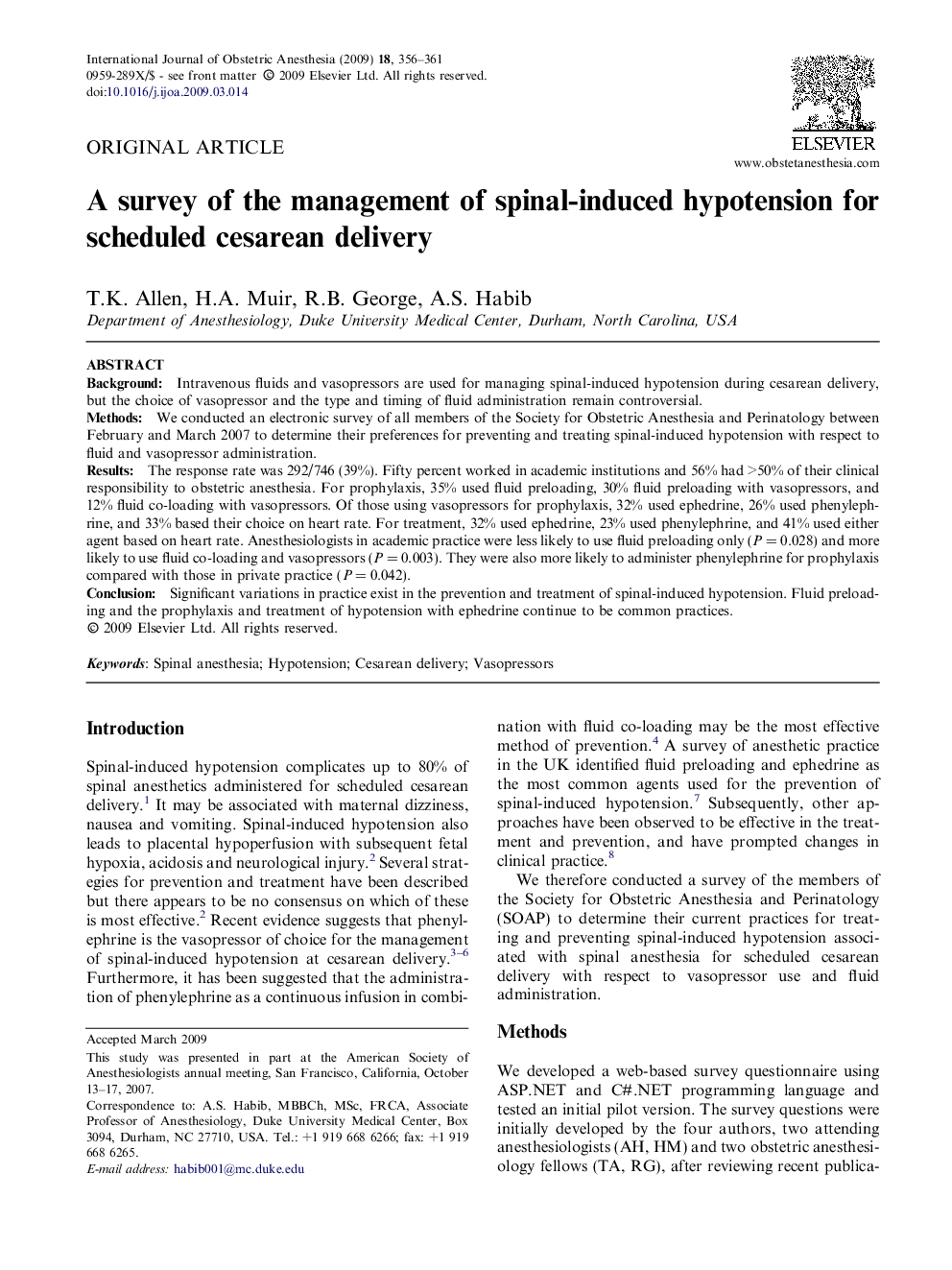| Article ID | Journal | Published Year | Pages | File Type |
|---|---|---|---|---|
| 2757954 | International Journal of Obstetric Anesthesia | 2009 | 6 Pages |
BackgroundIntravenous fluids and vasopressors are used for managing spinal-induced hypotension during cesarean delivery, but the choice of vasopressor and the type and timing of fluid administration remain controversial.MethodsWe conducted an electronic survey of all members of the Society for Obstetric Anesthesia and Perinatology between February and March 2007 to determine their preferences for preventing and treating spinal-induced hypotension with respect to fluid and vasopressor administration.ResultsThe response rate was 292/746 (39%). Fifty percent worked in academic institutions and 56% had >50% of their clinical responsibility to obstetric anesthesia. For prophylaxis, 35% used fluid preloading, 30% fluid preloading with vasopressors, and 12% fluid co-loading with vasopressors. Of those using vasopressors for prophylaxis, 32% used ephedrine, 26% used phenylephrine, and 33% based their choice on heart rate. For treatment, 32% used ephedrine, 23% used phenylephrine, and 41% used either agent based on heart rate. Anesthesiologists in academic practice were less likely to use fluid preloading only (P = 0.028) and more likely to use fluid co-loading and vasopressors (P = 0.003). They were also more likely to administer phenylephrine for prophylaxis compared with those in private practice (P = 0.042).ConclusionSignificant variations in practice exist in the prevention and treatment of spinal-induced hypotension. Fluid preloading and the prophylaxis and treatment of hypotension with ephedrine continue to be common practices.
